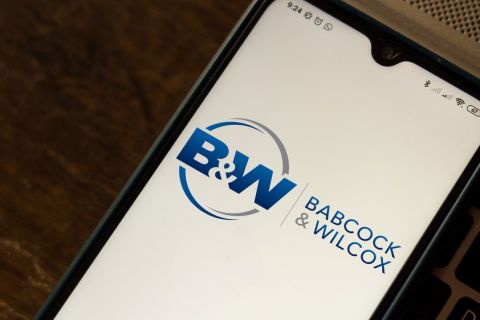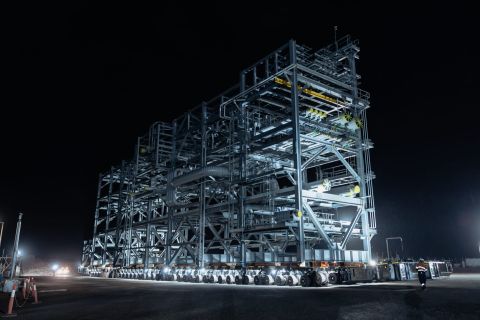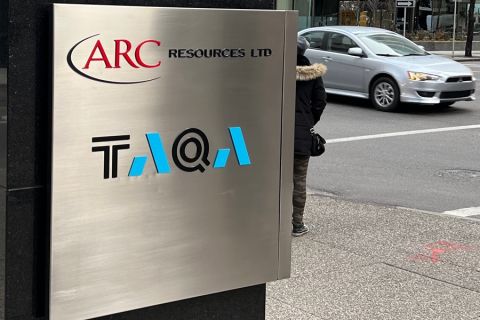Experts say power delivery and communication transmission issues are the primary drivers for subsea control over bigger distances.
Long offset developments depend on reliable power delivery and communication to the subsea equipment to allow operators to "talk" to and operate subsurface facilities. "For any power or communications system, there is always a maximum umbilical length beyond which the system cannot operate," said Nils Arne Soelvik of ABB Houston.
The problem of long-distance communication can be solved several ways, but the choice is governed by:
• number of wells (i.e. the number of communication nodes sharing a single communication line);
• quantity of data generated by each node;
• the required update rate for the data as presented to the operator; and
• the distance from surface control center to subsea wells.
Low-speed communication superimposed on power lines
This 2-wire system has been used successfully by the subsea industry for more than 15 years on many projects. Low-speed communications superimposed on power lines (COPS) can employ a number of modulation technologies such as phase modulation or frequency modulation. Although achievable data rates are typically less than 2 kilobytes per second, the performance of such systems has improved steadily over the years. Offset distances have been increased enough where it is possible to communicate with up to six subsea control modules multi-dropped at a distance of 62.5 miles (100 km).
It should be noted, Soelvik said, that what limits these long offset arrangements is the power, not the communication. This represents a well-tried and relatively simple technical solution, but the main limitation is the data rate and the consequent update rates. Update rates have been deemed acceptable until fairly recently, but with the advent of intelligent well systems, more complex sensors and the facility to download software updates, both to the subsea electronics and intelligent sensors, there is a drive to increase communication capacity.
Low-speed communication carried by dedicated lines
This implementation of the low-speed communication system uses the same modem and transmission system as COPS, except that dedicated lines carry the communication signals, separate from the power, forming a 4-wire system. The main benefit of this arrangement is that coupling filters are eliminated and the number of communication nodes can be expanded considerably. This type of system can operate over a range of 93 miles (150 km) with up to 16 nodes. Again, the limitation is the power levels that can be supplied with this size of conductor.
High-speed communication superimposed on power lines
The low-speed COPS system has been used successfully for many years. Together with its several variants, it will continue to be used where relatively modest data rates are acceptable. However, its inherent low-frequency operation severely limits its adaptation to higher data rates. It is not capable of providing a significant increase in capacity or to accommodate the new intelligent well system standard interface, which specifies transmission control protocol/Internet protocol operating at a minimum of 9,600 bits/sec.
Over the past few years, higher speed, copper-based modems have been utilized in the subsea environment, providing the higher bandwidth communications systems. However, there is a trade-off; the higher the data rates, the higher the operating frequencies and the shorter the distance capability. Typically, modems that offer data rates in excess of 9,600 bits/sec will operate only at distances of up to 38 miles (60 km) and are again limited in the number of nodes (wells) that can be connected. As the communications speed increases further, the offset distance capability reduces. Typically, at 100 kilobytes/sec, only 25 miles (40 km) is achievable.
The availability of higher bandwidths enables much higher update rates to be implemented along with the ability to incorporate intelligent well instrumentation standardization equipment.
Long-range, high-data rates
via fiber-optic communication
Where both long range and high data rates are required, it is necessary to move to fiber-optic communication systems.
While technology is widely available for telecom-style, long-range, high-bandwidth systems, the equipment used for such is not readily compatible with the type of equipment used typically for subsea controls, where there are severe constraints on space, power and cost, plus the need for high reliability.
The alternative is a more modest design that encompasses most subsea control requirements and can be packaged into a conventional subsea electronics module.
ABB has an optical modem that can communicate over a continuous fiber link of 186 miles (300 km), but any practical system needs connectors and splices; this brings the practical offset distance for a typical system down to about 137 miles (220 km) without intermediate repeaters.
The high data capacity enables more sophisticated communication strategies to be implemented and for new facilities to be introduced.
Electrical power provision
A discussion of long-range control cannot be confined to the area of communication alone since the provision of electrical power over long distances plays an important part in the system design. It may, therefore, be useful to consider some of the problems and consequences of providing power over a long distance.
Alternating current (AC) supplies traditionally have been the technology of choice for subsea power due to the relative simplicity of generation, safety and the use of highly reliable transformers subsea to match the loads to the transmission characteristics of the cable. As distance increases, however, the power losses increase and the advantages of AC supply begin to decrease compared with the use of direct current (DC) transmission. This has the main advantage of only incurring simple resistance losses against the reactive losses also incurred by an AC supply. It is reported that with utility companies, the switchover from AC to DC as a result of distance is about 62 miles (100 km). However their dominant design driver is transmission efficiency, whereas the subsea industry is driven much more by simplicity and reliability (as well as familiarity to known technology).
Recommended Reading
Chesapeake Enters into Long-term LNG Offtake Agreement
2024-02-13 - Chesapeake Energy entered into a long-term liquefaction offtake sale and purchase agreement with Delfin LNG and Gunvor Group for a 20-year period.
Babcock & Wilcox to Convert Coal Plant to NatGas
2024-03-18 - B&W will convert the plant’s two coal-fired boilers to natural gas by designing and installing burners, air systems, fans and other equipment.
NextDecade Targets Second Half of 2024 for Phase 2 FID at Rio Grande LNG
2024-03-13 - NextDecade updated its progress on Phase 1 of the Rio Grande LNG facility and said it is targeting a final investment decision on two additional trains in the second half of 2024.
Woodside’s Pluto Train 2 Nears 2026 Start Up with Modules Delivery
2024-02-21 - First 3 of 51 modules have arrived on site in Western Australia for the onshore LNG project that will receive gas from the offshore Scarborough project.
ARC Resources Adds Ex-Chevron Gas Chief to Board, Tallies Divestments
2024-02-11 - Montney Shale producer ARC Resources aims to sign up to 25% of its 1.38 Bcf/d of gas output to long-term LNG contracts for higher-priced sales overseas.





